Alpine Land Snails Working Group
at the Natural History Museum Vienna
In the late 1980ties the working group arose little by little through a co-operation of Hans Nemeschkal and Hans Kothbauer (University Vienna), which was complemented by a fruitful collaboration with Erhard Wawra and Helmut Sattmann (Natural History Museum Vienna). Morphometric investigations in the mollusc collection and on material from numerous collecting excursions were the basis for a number of master theses performed during those years. Agnes Bisenberger, Doris Kleewein, Helmut Baminger and Gabriele Baumgartner conducted their master theses on Arianta populations, and co-operations with Bruno Baur (Basel), Martin Haase (Vienna, Basel, now Greifswald), Anatoly Schileyko (Moscow) and several other working groups inseminated discussions, seminars and papers. Many details and results of these activities can be found in the reports of the working group ARIANTA 1-3. First molecular systematic studies were conducted at the NHM about Arianta populations and species in course of a FWF project in 1993-1995 (No. P09841-Bio). Furthermore, ecological and anatomical studies on the eastern alpine endemic Cylindrus obtusus were initiated.
The current working group constituted in the course of the project “Phylogeography of Alpine land snails” which started in 2005 and was funded by the Austrian Science Foundation FWF from 2007 to 2011 (No. P19592 B17). From this project a number of investigations of various genera emerged (e.g., on Cylindrus, Orcula, Trochulus, Petasina, Clausilia, Vertigo, Pyramidula and Cochlostoma), several of them still going on. Since 2012 several new projects were initiated, such as the FWF-funded project (No. P26581 B25) “Speciation in rock-dwelling land snails: Understanding the origin of diversity using Montenegrina as a model system” or a DNA-barcoding project on the Austrian malacofauna (in the course of ABOL, the “Austrian barcode of life” project) or the project on intraspecific differentiation and distribution ranges of Helicopsis striata. Furthermore, we participated in a monitoring project on core forest areas in the biosphere reservation “Wienerwald” being responsible for the land snails survey.
Our main interests concern evolutionary biology, reproduction biology, distribution patterns, dispersal mechanisms, ecological requirements and adaptations, genetic and morphological variation and, last but not least, speciation. We combine classical morphological methods with molecular analyses, but also consider habitat and distribution data as well as the fossil record to elucidate the phylogenetic and phylogeographic history of the various taxa and to get insights into the evolutionary history of snails in general, especially in the Alpine/Dinaric/Carpathian region.

Helmut Sattmann founded the Alpine Land Snails Working Group in the 1990ties and since that time is actively promoting advance in Austrian molluscan research and connecting scientists working on Alpine land snail research. He initiated and contributed to all projects performed throughout the early years. Specifically he initiated the project “Phylogeography of Alpine land snails” (funded by the Austrian Science Foundation FWF; No. 19592 B17), which led to a revival and boost of the working group since 2005. He has been contributing to most projects of the working group and and was involved together with Zoltán Fehér and Elisabeth Haring in planning the project ’Speciation in rock-dwelling land snails: Understanding the origin of diversity using Montenegrina as a model system’ (FWF P 26581-B25)

Anita Eschner is the curator of the Mollusc Collection of the NHMW and thus contributed to all projects of the working group. Specifically, she is a leading scientist in the Helicopsis project and the project “Barcoding of Austrian molluscs” a pilot study within the ABOL (Austrian Barcode of Life) initiative.

Michael Duda performed his PhD thesis on morphology, anatomy and ecology of Trochulus spp. Furthermore, he contributes with his taxonomic and ecological expertise to most of the projects of the Alpine Land Snails Working Group and participated in numerous collection trips. Currently, he is active in the project “Barcoding of Austrian molluscs” a pilot study within the ABOL (Austrian Barcode of Life) initiative.

Elisabeth Haring initiated and planned together with Helmut Sattmann the project “Phylogeography of Alpine land snails” (funded by the Austrian Science Foundation FWF; No. 19592 B17), which subsequently fostered numerous projects of the working group since 2005 dealing with various taxa and scientific questions. She has been contributing to most projects of the working group and planned together with Zoltán Fehér and Helmut Sattmann the project ’Speciation in rock-dwelling land snails: Understanding the origin of diversity using Montenegrina as a model system’ (FWF P 26581-B25).

Wilhelm Pinsker is a volunteering scientist at the Central Research Laboratories, NHM since his retirement at the Medical University of Vienna. He contributed with his experience and expertise to most manuscripts of the Alpine Land Snails Working Group and is of invaluable help in the course of our collecting trips.

Katharina Mason (nee Jaksch) performed morphological, and genetic analyses of Clausilia dubia in the course of her MSc study. Furthermore, she contributes to other projects, in particular to the Helicopsis project and the project “Barcoding of Austrian molluscs” a pilot study within the ABOL (Austrian Barcode of Life) initiative. Furthermore, she participated in numerous collection trips. Currently, she is performing her PhD thesis within the project ’Speciation in rock-dwelling land snails: Understanding the origin of diversity using Montenegrina as a model system’ (FWF P 26581-B25).

Luise Kruckenhauser guided the genetic analyses of the projects on Trochulus and Cylindrus and contributed significantly to most projects of the working group. Specifically, she is a leading scientist in the project "Barcoding of Austrian molluscs" a pilot study within the ABOL (Austrian Barcode of Life) initiative. She participated in most collection trips and supervises and manages the data base of the Alpine Land Snails Working Group.
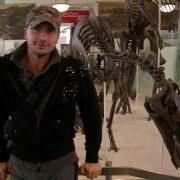
Willy De Mattia studies the taxonomy, systematics, anatomy, phylogeny, biogeography and ecology of European land and freshwater molluscs and his main fields of interest are Clausiliidae, Hygromiidae, Geomitridae, Helicidae, Cochlostomatidae and Milacidae.
He initiated the currently running project "Anatomical revision of Alopiinae (Gastropoda: Pulmonata: Clausiliidae): testing genital characters in clausiliid systematics”.

Sandra Kirchner performed morphological, and genetic analyses of Pyramidula pusilla in the course of her MSc study. Furthermore, she contributes to other projects, e.g., on Orcula and Trochulus and participated in numerous collection trips.
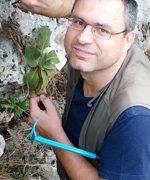
Zoltán Fehér has joined the Alpine Land Snail Working Group in 2014 as a project researcher. Before that, he worked in the Hungarian Natural History Museum (Budapest) as the curator of the Mollusc Collection. He is interested in systematics, phylogeny, biogeography and conservation genetics of terrestrial and freshwater molluscs. During the past more than two decades he has organized and participated in several zoological fieldtrips in Southern Europe and Western Asia with the main focus on the Balkan countries.
Zoltán Fehér initiated the currently running project ’Speciation in rock-dwelling land snails: Understanding the origin of diversity using Montenegrina as a model system’ (FWF P 26581-B25). He took a significant part in planning the project and is the principal investigator in this study. Furthermore, he contributed to the study of the phylogeny of Ariantinae and is involved in other studies related to Carpathian, Balkan and Alpine molluscs.

Josef Harl performes his PhD thesis on phylogeography and morphology of Orcula spp. with special emphasis on Orula dolium. Furthermore he is performing a phylogenetic analysis of Orculidae. He contributes to many projects of the Alpine Land Snails Working Group and participated in numerous collection trips.

Anatoly Schileyko contributed to the projects with a lot of determination and dissection work. Especially for Orculids and Cylindrus. Anatoly Schileyko has studied material from the NHM Mollusc collection and from the material collected during our collecting trips. Furthermore, he provided valuable material from his collection for our research.

Sonja Bamberger contributed to the project on T. oreinos oreinos and T. o. scheerpeltzi. In the course of her Master thesis she analyses these taxa in their contact zone with AFLPs. Moreover, she contributed to the Montenegrina project.

With her technical experience Barbara Tautscher contributed to most of the projects of the Alpine Land Snails Working Group with lab work and field assistance throughout numerous collection trips. She also took part in organizing workshops, meetings and other events.
Laura Zopp performed morphological, anatomical and histological analyses of Cylindrus obtusus in the course of her MSc study. Furthermore, she contributed to other projects of our working group and participated on numerous collection trips.
Luis Cadahía contributed to the projects Cylindrus and Ariantinae. He isolated and tested the Microsatellite primers for the population analysis of C. obtusus an was the principal investigator of the phylogenetic analysis of Ariantinae.
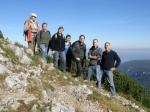
Phylogeography of Alpine land snails – overview
Our research on Alpine land snails focuses on taxa with interesting distribution patterns, mainly in the eastern Alps and surrounding regions. Following up studies in the 1990ties on the systematics and biology of the genera Arianta and Cylindrus, we started in 2005 working on the genera Orcula and Trochulus and their relatives and, again, on the east Alpine endemic Cylindrus obtusus. The project “Phylogeography of Alpine land snails” was funded by the Austrian Science Foundation FWF (No. 19592 B17) from 2007 to 2011. In addition to the above-mentioned taxa, other taxa (e.g., the Clausilia dubia complex, Pyramidula and Helicopsis) were investigated in our phylogeographic studies.
Those projects address questions of evolutionary history, glacial refugia, distribution patterns, dispersal mechanisms, genetic and morphological variation and speciation. These aspects are all part of the prominent task to deepen the knowledge of snail biodiversity. Furthermore, we aim to gather advanced knowledge for risk assessments, red data lists and nature conservation directives. Methodically, we combine classical morphological investigations with molecular genetic analyses. We use fresh samples as well as material from museum collections. We have collected vast material of many taxa throughout the last years and built up a database; both are incorporated into the mollusc collection of the Natural History Museum in Vienna (NHMW). Genetic samples are routinely deposited in the tissue collection of the NHMW. We enjoy our contacts with the international scientific community, and are fairly interested in further discussion and co-operations.
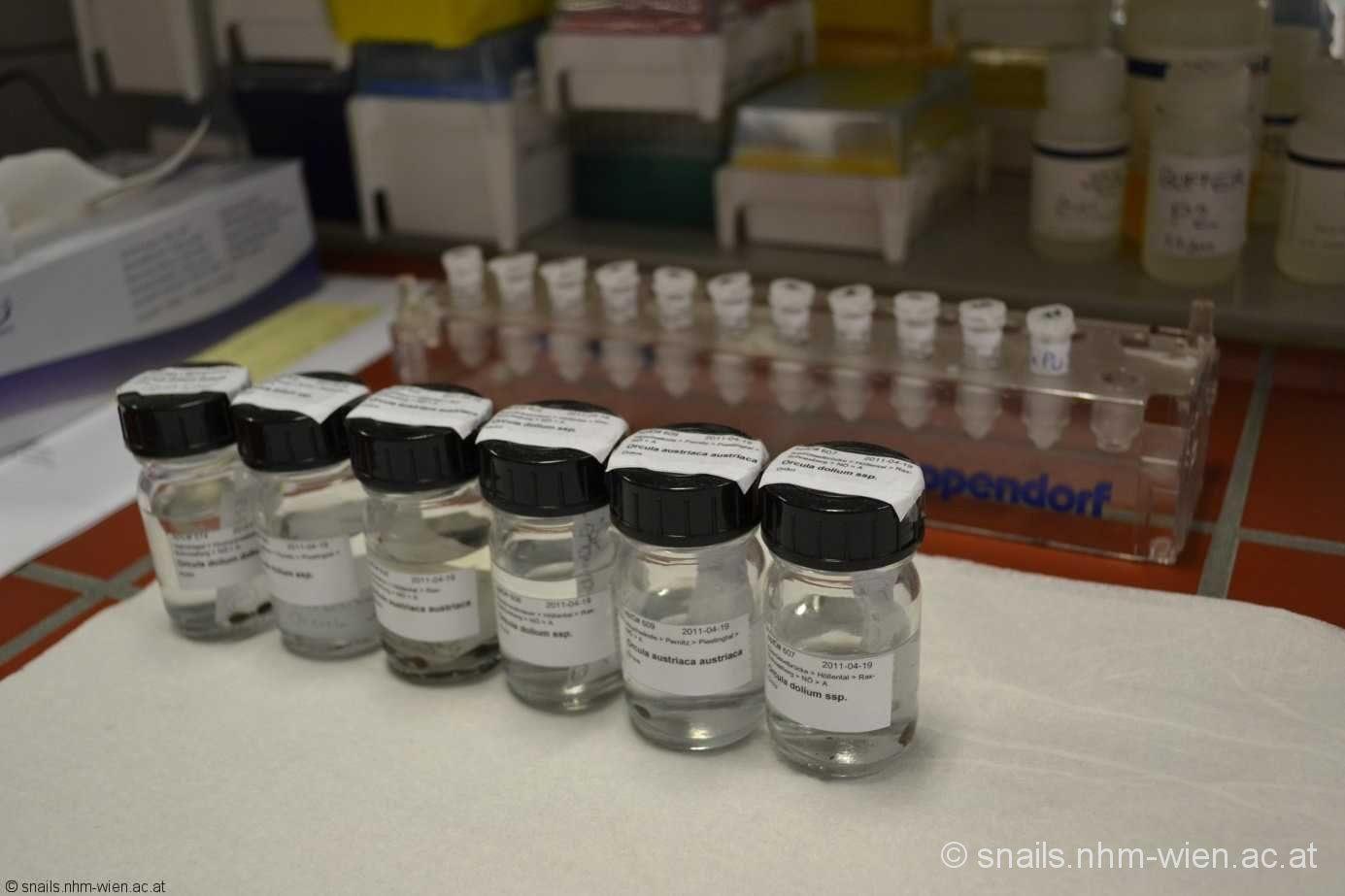
Barcoding of Austrian molluscs
Communication: Anita Eschner, Luise Kruckenhauser
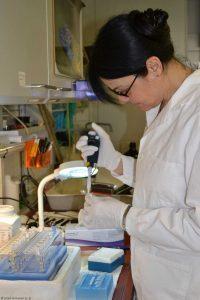
DNA Barcoding
The (long-term) goal of the Initiative Austrian Barcode of Life is to characterize all species of animals, plants and fungi in Austria using DNA barcodes and to store the sequences together with metadata in a broadly accessible databank. In many cases this characterization enables a simple, quick and inexpensive identification of species – even if only tissue remains or developmental stages (eggs, larvae) are available. In those species whose genetic make-up is highly structured and variable, this survey raises interesting questions related to evolutionary history and biology. In some cases we can expect the discovery of new species. ABOL serves as an effective tool for numerous applications ranging from food safety to nature conservation. In the current phase (funded by the Federal Ministry of Science), one of four pilot projects will deal with the Austrian molluscs. It is coordinated by Anita Eschner and Luise Kruckenhauser from the NHM Vienna.
The high diversity of Austrian habitats between the Eastern Alps and the Panonnian plain harbours a rich number of molluscs, with records of almost 400 species. About 13% are endemics, thus can be exclusively found in Austria. The most recent Red List draws an alarming picture for Austrian molluscs: about 35% of all snail species and about 37% of all bivalves are endangered to threatened with extinction. Snails are important decomposers of organic matter and thus play a decisive role in soil formation. Many mollusc species are perfectly suited to evaluate the quality of biotops. Their specific requirements make them ideal bioindicators. Especially spring or fountain snails can be used as indicators of water quality: their presence is a sign for good quality, if numbers decline or species are absent, there are reasons for it! Some species externally can be hardly kept apart; especially juveniles often cannot be identified with confidence. DNA-Barcodes of the entire mollusc biodiversity of Austria will allow for using even such individuals as bioindicators. Experts of molluscs will nevertheless not run out of work: The additional insights acquired by DNA-Barcoding regarding species recognition and delimitation, will render new open questions to solve. As has been shown in molecular genetic studies of the “Alpine Land Snails Working Group” at the Natural History Museum in Vienna, a high degree of diversity is still hidden, even concealing undiscovered species!
Core team: Anita Eschner, Luise Kruckenhauser
Team members: Michael Duda, Katharina Mason, Oliver Macek, Julia Schindelar, Jan Steger (University of Vienna), Johannes Volkmer (University of Graz), Helmut Sattmann, Elisabeth Haring
Publications:
Duda, M., Schindelar, J., Macek, O., Eschner, A., & Kruckenhauser, L. (2017). First record of Trochulus clandestinus (Hartmann, 1821) in Austria (Gastropoda: Eupulmonata: Hygromiidae). Malacologica Bohemoslovaca, 16, 37–43. http://mollusca.sav.sk/pdf/16/16.Duda.pdf (CITE)
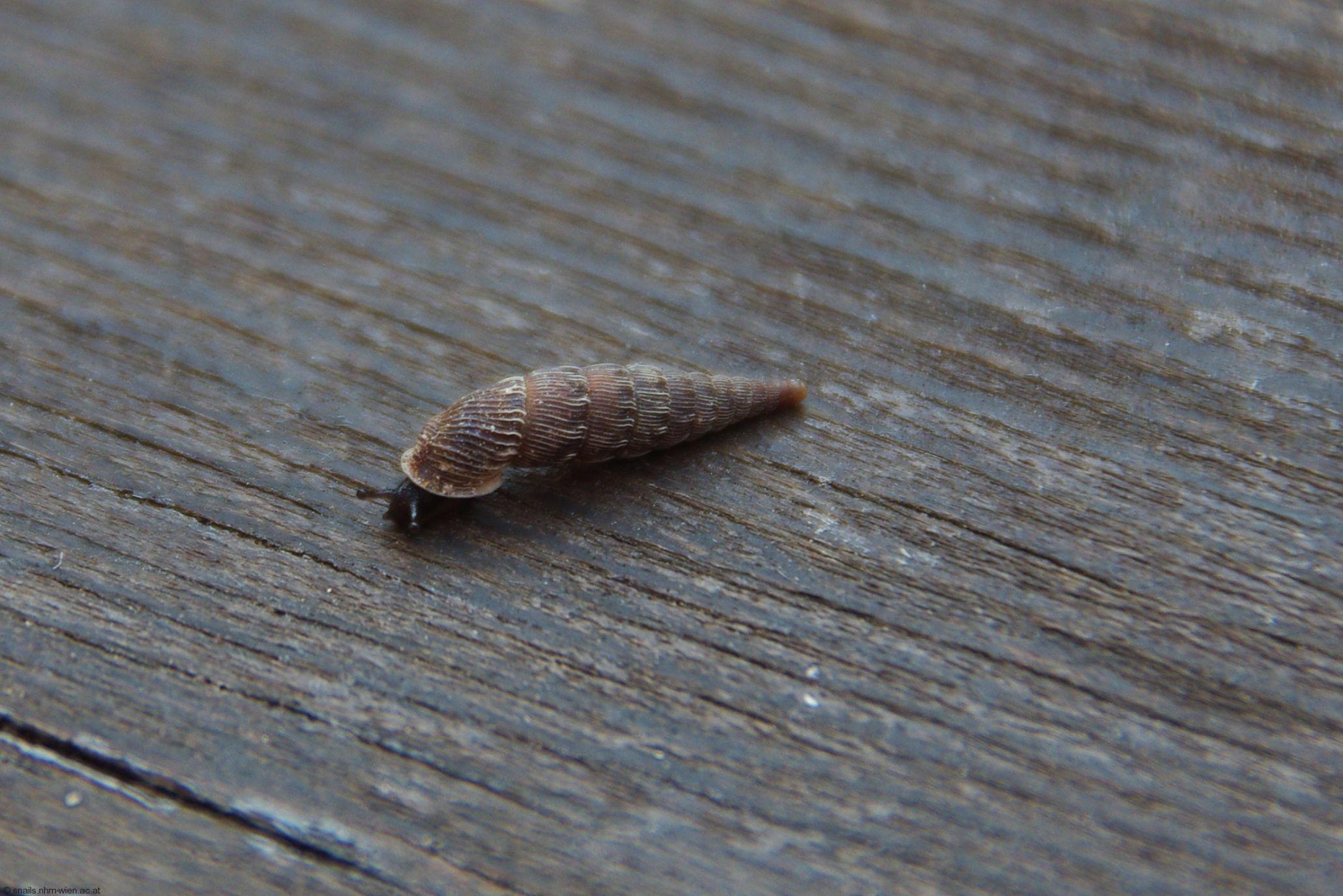
Clausilia dubia
Communication Katharina Mason
Among many clausilid species numerous subspecies have been described in the past which is partly a consequence of their patchy distribution and their complex morphology. Especially the clausilial structures in the aperture are highly differentiated. In case of Clausilia dubia (DRAPARNAUD, 1805) 16 subspecies are listed solely for Austria. In the present project morphological data (various shell characters) and molecular data (partial sequences of the mitochondrial gene for COI) were for the first time investigated in parallel to assess phylogeographic patterns. It was our aim to evaluate whether the described subspecies are genetically and/or morphologically differentiated. Moreover we wanted to find out whether the morphological and the genetic results are in accordance. We analyzed 150 individuals of Clausilia dubia, collected at 55 sampling sites in the eastern part of the Northern Calcareous Alps of eastern Austria. In this area 12 subspecies are expected to occur. Of these 12 subspecies only ten could be differentiated morphologically, but due to their similarities they can be merged in four morphogroups. In the NJ-tree derived from the DNA sequence data at least five highly supported clades become apparent. However, none of these clades corresponds solely to any of the described subspecies or morphogroups. Though these data are still preliminary, final taxonomic and nomenclatorial consequences will be proposed when the data set is complete.
Publication:
Mason, K., Sattmann, H., Eschner, A., Duda, M., Harl, J., Kruckenhauser, L., Leeb, C., & Haring, E. (2020). Variation in mitochondrial sequences and shell morphology of Clausilia dubia Draparnaud, 1805 (Gastropoda: Clausiliidae) in eastern Austria. Arianta, 8, 38–57. (CITE)
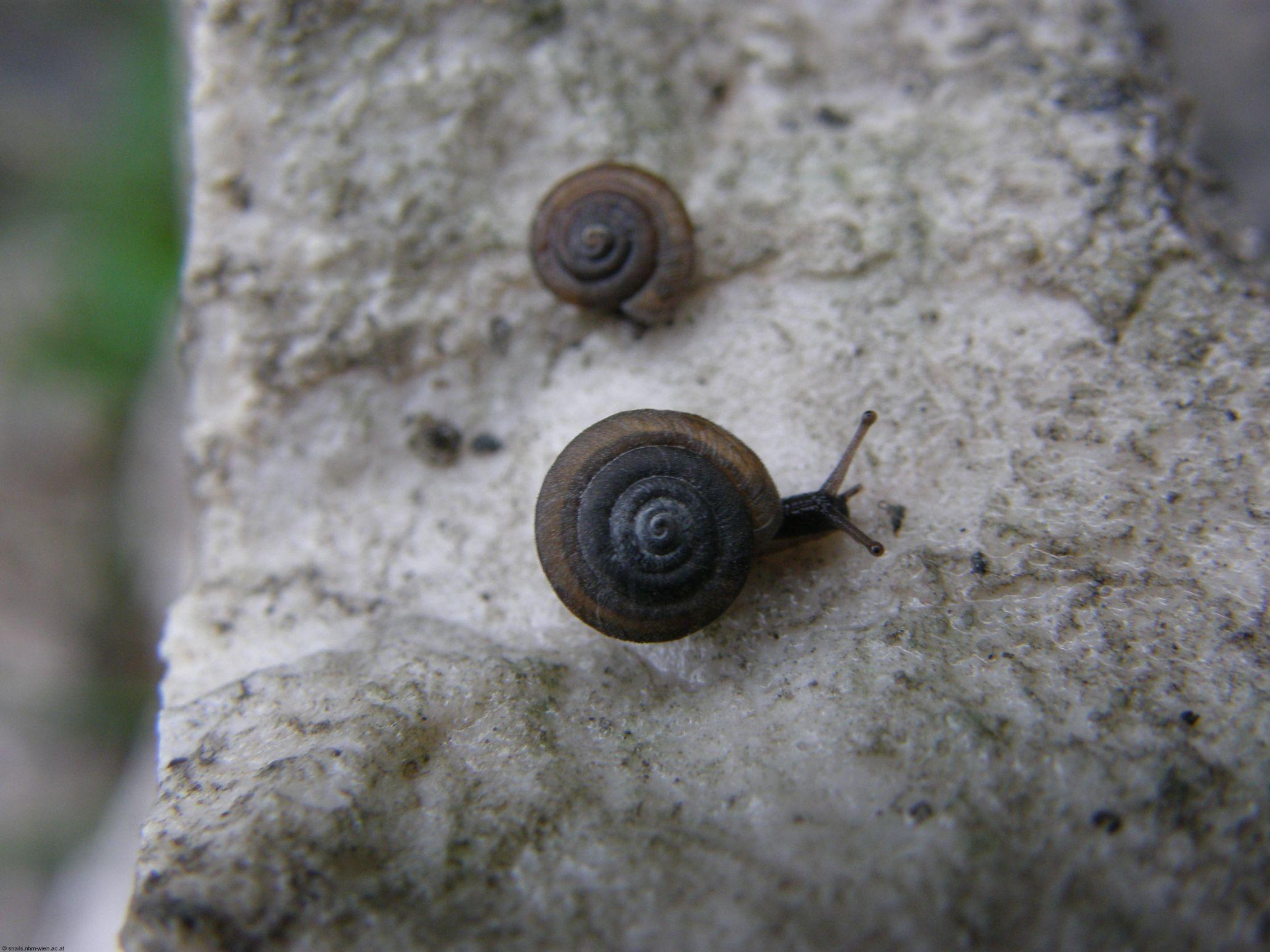
Trochulus sp.
Communication: Luise Kruckenhauser (genetics), Michael Duda (morphology, anatomy, ecology)
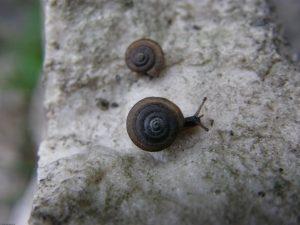
Trochulus oreinos scheerpeltzi, an Austrian endemic with a very small distribution area, is restricted to high elevations.
The major aim of this project was to elucidate the phylogeography of the hairy snail Trochulus hispidus with emphasis on Alpine populations, to investigate the morphological variation within Austrian populations of T. hispidus including the ill-described and problematic taxon T. sericeus, and to revise the taxonomic state of the East-Alpine endemic Trochulus oreinos and its subspecies. Analyses of the mitochondrial genes for cytochrome c oxidase subunit I (COI), 12S rRNA (12S) and 16S rRNA (16S) revealed nine distinct mitochondrial clades (showing p-distances up to 19% in COI), all of them comprising individuals with a T. hispidus phenotype. Moreover, T. hispidus appears paraphyletic in the phylogenetic tree with respect to several other morphologically well defined Trochulus species (T. clandestinus, T. villosus, T. villosulus and T. striolatus) which form well-supported monophyletic groups. The results of a parallel morphometric investigation did not reveal any differentiation between the nine T. hispidus clades.
Two congeners of T. hispidus were investigated in more detail: T. striolatus and T. oreinos. Concerning T. oreinos (formerly treated as a subspecies of T. hispidus) morphological investigations reconfirmed its status as a separate species characterized by some distinct diagnostic traits like differences in hair morphology. Furthermore, we identified several characters like shell measurements and structures that distinguish the two species by trend, although there are overlaps in some cases. The two geographically and genetically well separated subspecies of T. oreinos (oreinos and scheerpeltzi) show only weak morphological differentiation. Genetic analyses revealed the two T. oreinos subspecies as distantly related sister groups, clearly separated from T. hispidus. The deep divergences between the three taxa is also reflected in high divergences in nuclear marker sequences which implies that they represent old lineages. Differences are also found in habitat preferences: While T. oreinos is restricted to rocky high alpine areas, especially Carex firma meadows with patchy structures, T. hispidus is distributed over a wider altitudinal range in moist areas and scrubby perennial herb vegetation near water bodies. Within T. striolatus there is a slight morphological differentiation between the subspecies T. s. striolatus, T. s. juvavensis and T. s. danubialis, which are not clearly separated at the genetic level.
For more information on our phylogenetic, morphological, anatomical and ecological investigations and on presumed glacial refugia read our publications and see below. Our results were also presented at several scientific meetings.
Currently, potential gene flow between the two subspecies of T. o. oreinos and T. o. scheerpeltzi in their contact zone is analysed by Sonja Bamberger in the course of her master thesis (in collaboration with Andreas Tribsch, University of Salzburg). For this task she is utilizing AFLP markers. The results, together with all information gathered from our previous investigations, shall lead to a conclusive decision whether the two taxa should be elevated to species level.
Publications:
Duda, M., Kruckenhauser, L., Sattmann, H., Harl, J., Jaksch, K., & Haring, E. (2014). Differentiation in the Trochulus hispidus complex and related taxa (Pulmonata: Hygromiidae): morphology, ecology and their relation to phylogeography. Journal of Molluscan Studies, 80(4), 371–387. https://doi.org/10.1093/mollus/eyu023 (CITE)
Duda, M., Sattmann, H., Haring, E., Bartel, D., Winkler, H., Harl, J., & Kruckenhauser, L. (2011). Genetic differentiation and shell morphology of Trochulus oreinos (Wagner, 1915) and T. hispidus (Linnaeus, 1758) (Pulmonata: Hygromiidae) in the northeastern Alps. Journal of Molluscan Studies, 77(1), 30–40. https://doi.org/10.1093/mollus/eyq037 (CITE)
Duda, M., Kruckenhauser, L., Haring, E., & Sattmann, H. (2010). Habitat requirements of the pulmonate land snails Trochulus oreinos oreinos and Cylindrus obtusus endemic to the Northern Calcareous Alps. Austria.- eco.mont / Journal on Protected Mountain Areas Research, 2, 5–12. https://doi.org/10.1553/eco.mont-2-2s5 (CITE)
Bamberger, S., Duda, M., Tribsch, A., Haring, E., Sattmann, H., Macek, O., Affenzeller, M., & Kruckenhauser, L. (2020). Genome‐wide nuclear data confirm two species in the Alpine endemic land snail Noricella oreinos s.l. (Gastropoda, Hygromiidae). Journal of Zoological Systematics and Evolutionary Research, jzs.12362. https://doi.org/10.1111/jzs.12362 (CITE)
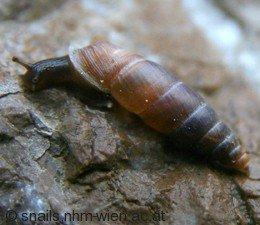
Speciation in rock-dwelling land snails: Understanding the origin of diversity using Montenegrina as a model system
In terms of the geographical range, we broadened the area of interest towards the Balkans. The high species diversity, the large number of narrow-range endemic taxa as well as the close historical biogeographical relationships with the Alpine fauna makes it a promising area for biodiversity research.
The Balkans, like some other limestone dominated biodiversity hotspots in the World, has a very rich obligate rock-dwelling mollusc fauna. However, relatively little is known about the factors and processes that contribute to the development and maintenance of this fascinating diversity. During our FWF funded project – ’Speciation in rock-dwelling land snails: Understanding the origin of diversity using Montenegrina as a model system (FWF P 26581-B25)’ – we analysed this door-snail (clausiliid) genus to gain insight into the speciation of obligate rock-dwelling gastropods in general.
Montenegrina is distributed in the western part of the Balkan Peninsula (Montenegro, Macedonia, Greece and Albania). Like other obligate rock-dwelling animals, Montenegrina populations live on bare limestone cliff surfaces or under limestone rocks. Due to the patchy distribution of this special habitat type, the genus comprises several small range endemic taxa. Moreover, due to intensive fieldwork activity over the past decade, several populations were newly discovered. The number of populations (based on literature records and museum collections) was estimated between 350 and 500 reflecting an extremely high rate of endemism.
The systematics of this taxon-rich group, as of almost every rock-dwelling gastropod group in the Mediterranean region, was almost exclusively set-up on a conchological basis. Our molecular genetic studies, however, revealed that most of the conchological traits, which were considered taxonomically important, show morphological convergence and many ‘species’ in the morphology-based taxonomy appeared paraphyletic.
Core Team: Elisabeth Haring, Zoltán Fehér, Katharina Mason, Sonja Bamberger, Luise Kruckenhauser, Helmut Sattmann
Publications:
Jaksch, K., Kruckenhauser, L., Haring, E., & Fehér, Z. (2017). First establishment of microsatellite markers in clausiliid snails (Mollusca: Gastropoda: Clausiliidae). BMC Research Notes, 10, 137. https://doi.org/10.1186/s13104-017-2462-7 CITE
Fehér, Z., Mason, K., Szekeres, M., Haring, E., Bamberger, S., Páll‐Gergely, B., & Sólymos, P. (2018). Range‐constrained co‐occurrence simulation reveals little niche partitioning among rock‐dwelling Montenegrina land snails (Gastropoda: Clausiliidae). Journal of Biogeography, 45(6), 1444–1457. https://doi.org/10.1111/jbi.13220 CITE
Mason, K., Fehér, Z., Bamberger, S., Reier, S., Szekeres, M., Sattmann, H., Kruckenhauser, L., De Mattia, W., & Haring, E. (2020). New insights into and limitations of the molecular phylogeny in the taxon‐rich land snail genus Montenegrina (Mollusca: Gastropoda: Clausiliidae). Journal of Zoological Systematics and Evolutionary Research, 58(3), 662–690. https://doi.org/10.1111/jzs.12413 CITE
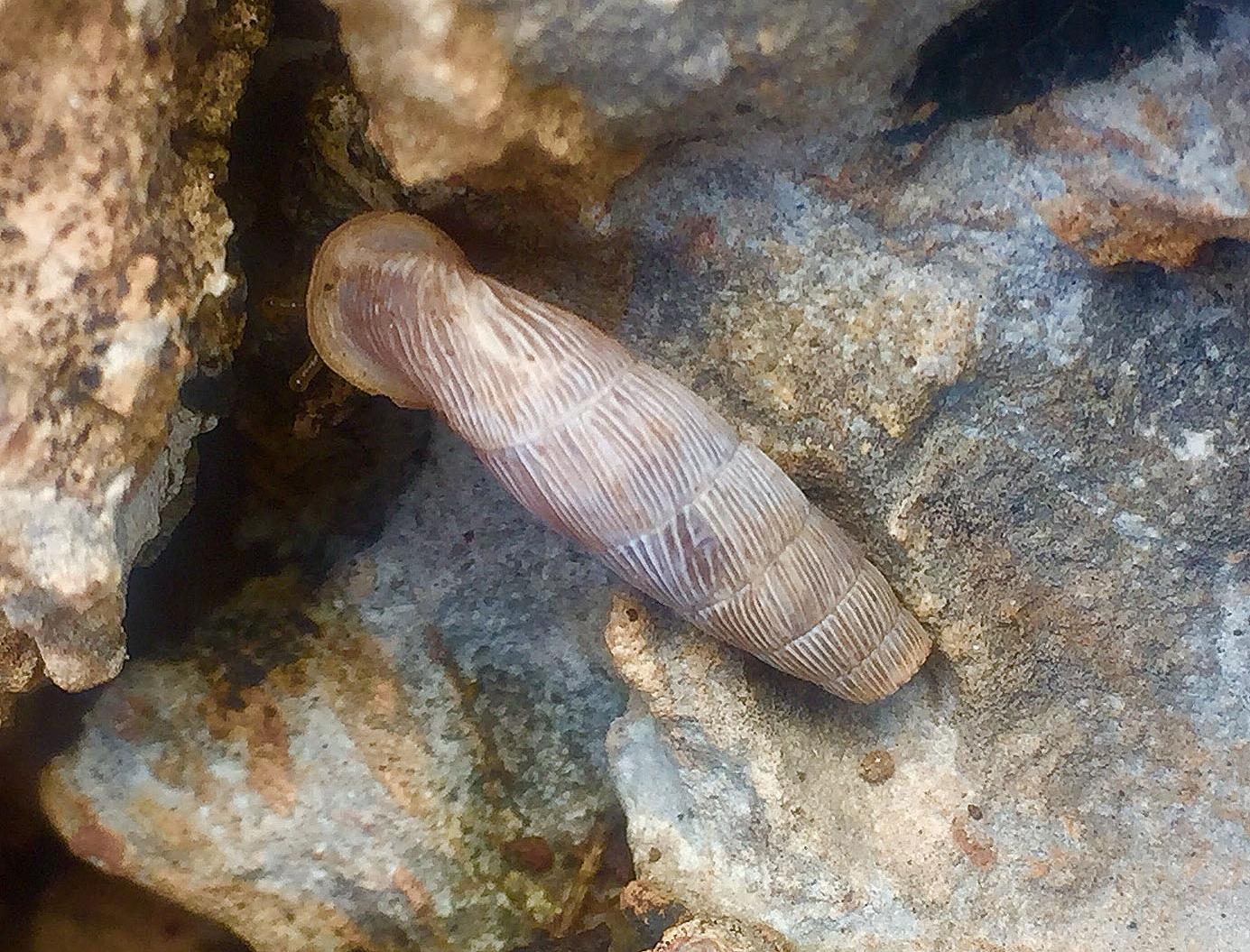
Anatomical revision of Alopiinae (Gastropoda: Clausiliidae)
The systematics of Alopiinae clausilids is almost exclusively based upon shell features, even if some difference in the genital apparatus is known to partially define each genus. The whole picture is anyway far from being clear, despite a huge amount of taxonomic literature. All of these papers, if not exclusively focusing on molecular phylogeny, give absolute priority to shell characteristics, considering the morphology of genitalia of little if no importance.
Alopiinae and clausiliids in general show great phenotypic plasticity of the dimensions and features of the shell.
In order to evaluate a possible research path, genital investigations are being performed to test if a taxonomically relevant situation could be detected. The anatomy of representatives of the genera Montenegrina, Delima, Alopia, Medora, Agathylla and Charpentieria s.l. will be investigated.
At genus level the general objective of this project comprises two questions:
1. Can genera (and subgenera) be delimited more precisely with anatomical characters?
2. Which characters are phylogenetically informative at higher taxonomic levels?
Until now, only summary and sometimes incorrect descriptions of the genital arrangements of the different Alopiinae genera are found in the literature. This situation is principally due to the superficial (if not wrong) approach to dissections and the approximate resulting iconography. Nevertheless, the most important factor is the extremely small number of individuals/taxa for every genus investigated until now. Only a large number of observations carried out on large numbers of species/individuals can provide a reliable general anatomical description for each genus.
Phylogenetic investigation aims to identify synapomorphies (vs. homoplasies) to reveal evolutionary relationships.
At species/subspecies level the general objective of the project addresses several questions and subtasks:
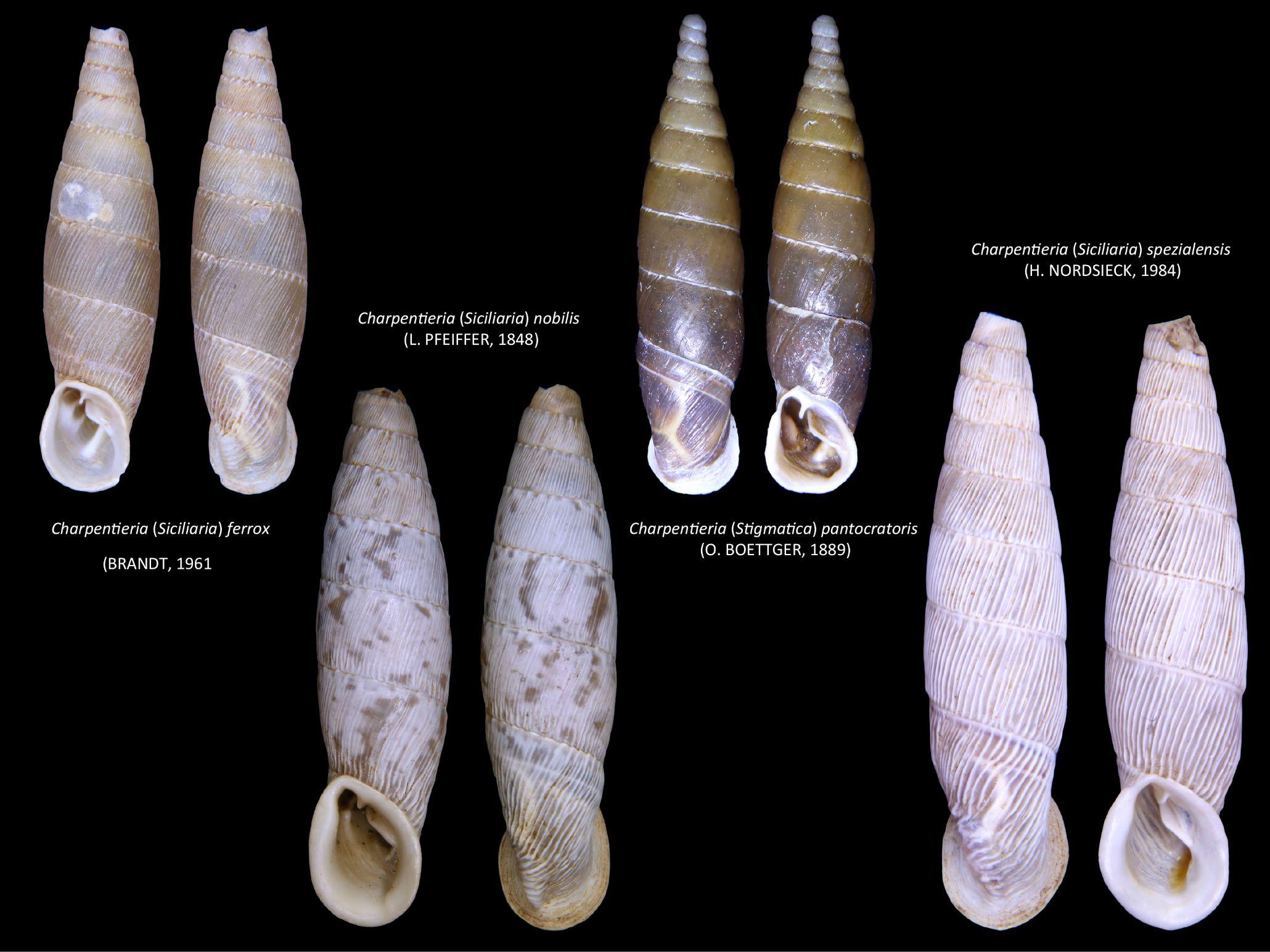
Siciliara shells
Preliminary results revealed that every anatomical section can assume a set of different arrangements and thus, the taxa proved to be clearly distinguishable by virtue of the combination of the different sections. Sometimes taxa with remarkably different shells are considered as subspecies of the same species, whereas similar shells are considered as different species, e.g., based on only a small difference in the length or a slight change in the position of a single plica. The analysis of the genitalia will significantly increase the morphological traits that can be investigated, providing new insights into intraspecific variability, both regarding shell and genitalia.
A merger of the three taxonomic approaches − shell, genitalia and molecular genetic − will be attempted in order to create a complete integrative approach to the systematics of the Alopiinae.
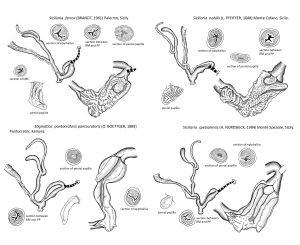
Siciliaria anatomies
Publications:
De Mattia, W., Fehér, Z., Mason, K., & Haring, E. (2020). An integrative approach to the taxonomy and systematics within the genus Montenegrina Boettger, 1877 (Mollusca, Gastropoda, Clausiliidae). Journal of Zoological Systematics and Evolutionary Research, 58(3), 691–808. https://doi.org/10.1111/jzs.12407 (CITE)
Team: Willy De Mattia
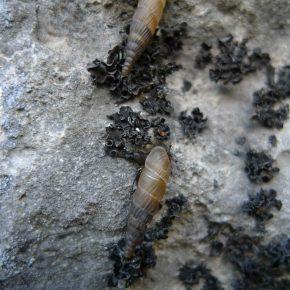
Study on population size and dispersal of Montenegrina subcristata
The study of a population of the rock-dwelling door snail species Montenegrina subcristata was performed in 2017-2018. It was part of an OeAD-WTZ-cooperation project (Project No. ME 10/ 2016) of the University of Montenegro and the working group Alpine Land Snails of the NHMW. This field study near Virpazar, Montenegro was dedicated to assess population size, activity, range, growth and habitat preferences of Montenegrina subcristata.
Under the supervision of Prof. Vladimir Pešić and members of the ALS-NHM team, Anđjea Bulatović and Jovana Marković carried out their Master theses in the frame of this project. This study provided first hints to assess the potential of migration, local extinction and recolonization in Montenegrina and other rock-dwelling snails. The results were published in 2019:
Bulatović, A., Marković, J., Haring, E., Pinsker, W., Mason, K., Duda, M., Bamberger, S., Kirchner, S., Sittenthaler, M., Fehér, Z., Pešić, V., Savic, A., & Sattmann, H. (2019). First data on population estimates and dispersal of Montenegrina subcristata – a field study at Virpazar, Montenegro. Ecologica Montenegrina, 26, 147–165. (CITE)
Team: Elisabeth Haring, Helmut Sattmann, Katharina Mason, Zoltán Fehér, Sonja Bamberger, Vladimir Pešić, Vesna Vukašinović-Pešić, Anđjea Bulatović, Jovana Marković
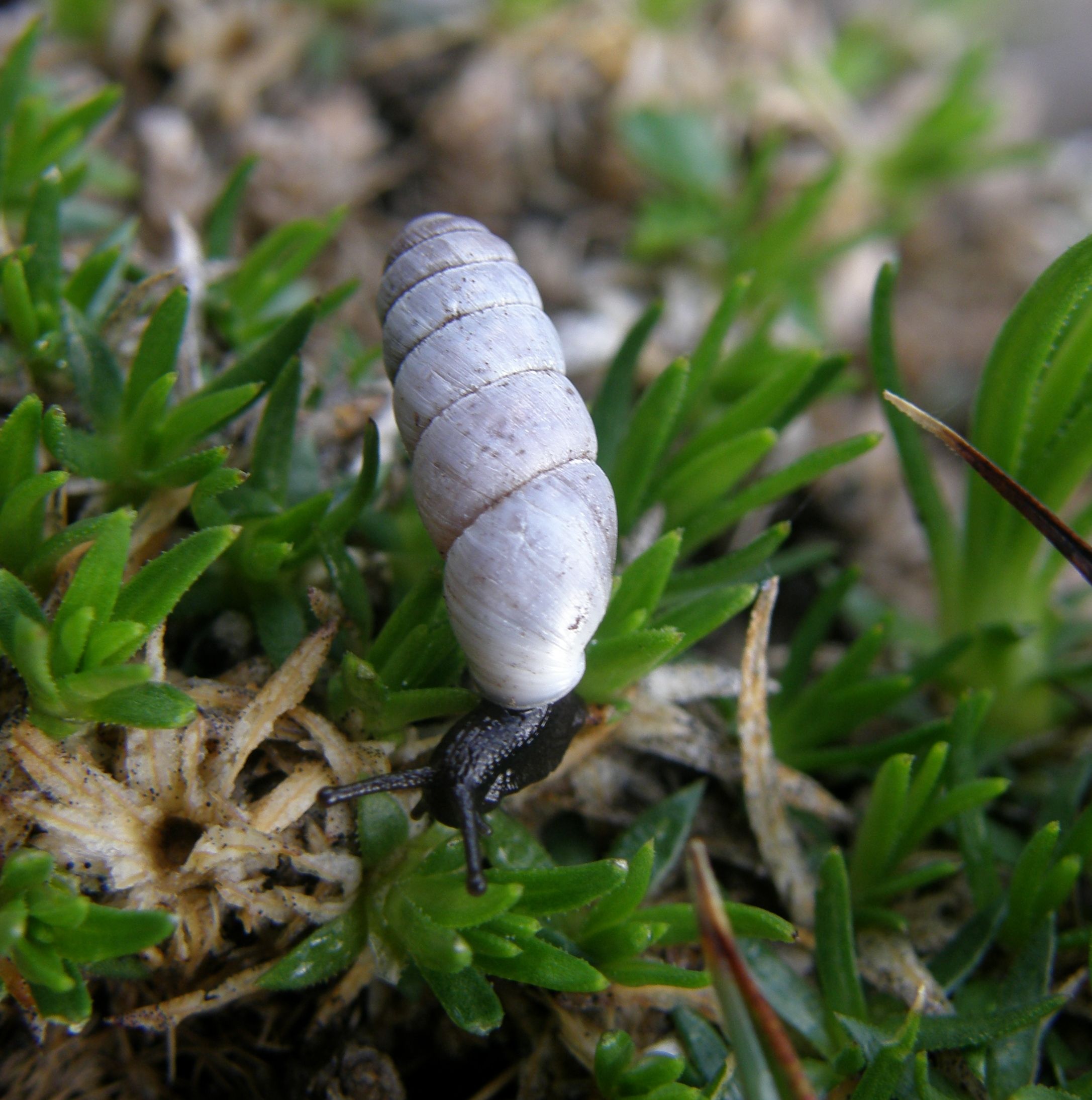
Cylindrus obtusus
Communication: Luise Kruckenhauser (genetics), Laura Zopp (anatomy, morphology, histology)
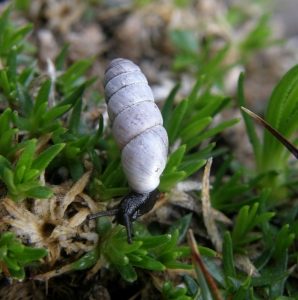
Cylindrus obtusus
The hermaphroditic land snail Cylindrus obtusus (Draparnaud, 1805) is an endemic of the Austrian Alps. Restricted to high elevations (1600 to 2500 m asl; Bisenberger et al. 1999, Duda et al. 2010) it has a rather patchy distribution extending from Schneeberg to Großglockner. Previous qualitative analyses of anatomical traits of the distal female genital tract revealed two geographically distinct groups. Western populations show pairwise mucus glands of equal size whereas in eastern populations these glands are conspicuously shortened and (sometimes) asymmetrically to different degrees (Schileyko et al. 1997). To find out whether these anatomical differences reflect a genetic differentiation, which might be an indication for distinct glacial refugia, we investigate a partial sequence of the mitochondrial COI gene and 9 microsatellite loci (Arthofer et al. 2010) from samples covering the whole distribution range of the species. The COI sequences indicate a geographic differentiation between eastern, central and western populations. However, genetic distances are small (max. 1.7 %). The microsatellite analysis reveals a high differentiation between the populations implying restriction of gene flow. Remarkably, nearly all individuals from the eastern populations are homozygous at all microsatellite loci (although different alleles were found within populations). The most plausible explanation for this finding is an altered mode of reproduction. Further investigations shall elucidate whether this lack of heterozygotes is caused by selfing and if so, why it occurs at such a high frequency. In a morphological study, two different approaches are employed: Quantitative measurements of the mucus glands and the stylophore are taken from more than 70 individuals collected from 16 populations. Preliminary results confirm quantitatively the east-west division previously described. A comparative histological investigation of the mucus glands will be performed to assess the functionality of these structures in both groups.
In an additional analysis, we try to elucidate the phylogenetic relationships of C. obtusus within the Helicidae on the basis of various molecular markers.
First results were presented at several scientific meetings.
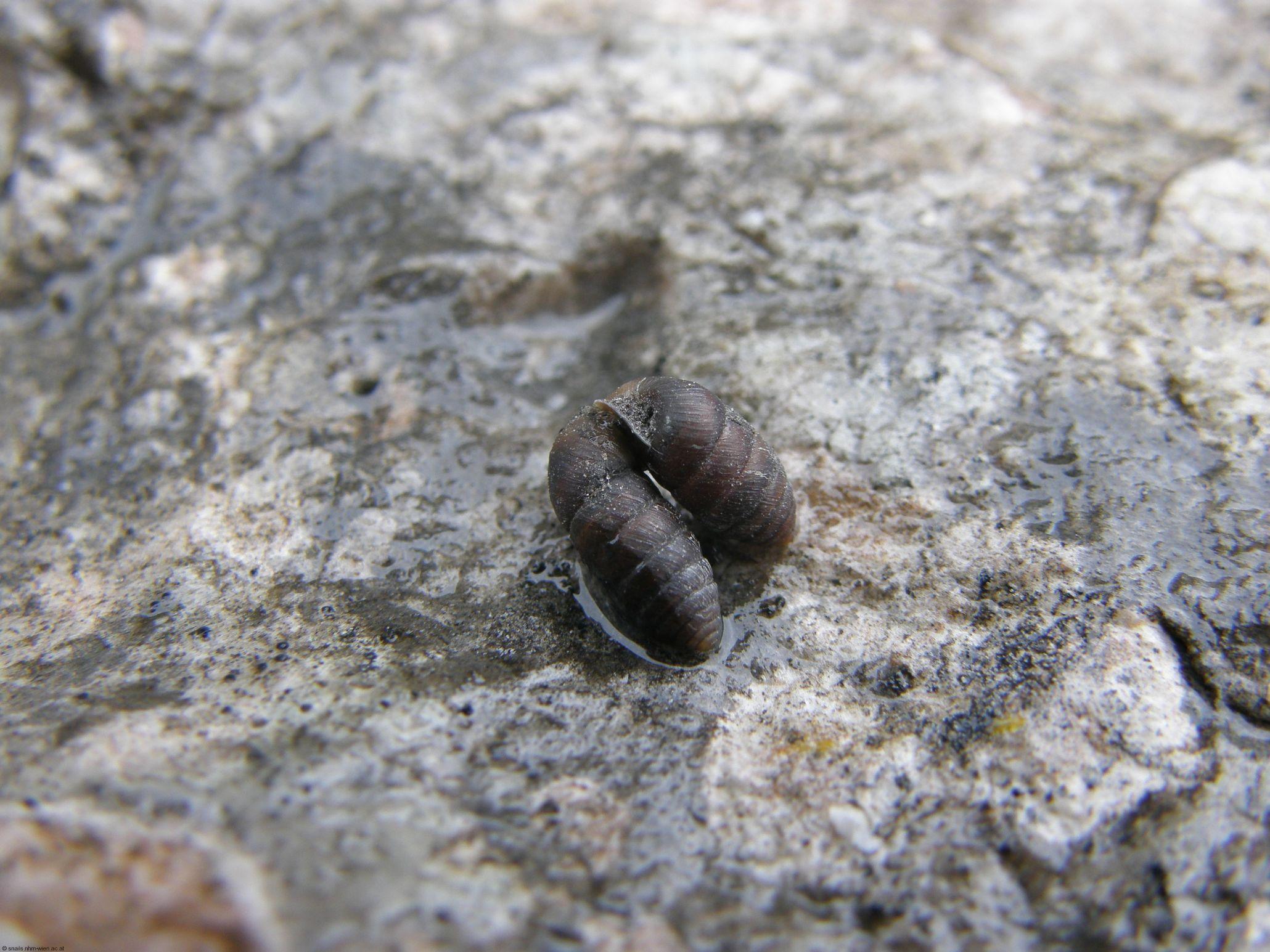
Orcula sp.
Communication: Josef Harl
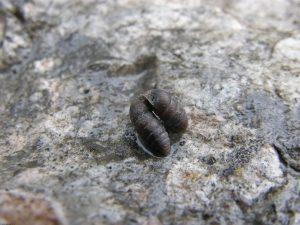
Two specimens of Orcula pseudodolium “kissing”. The photo was made in the species’ type locality, the Sengsengebirge of the National Park Kalkalpen.
The project treats the phylogeography of the land snail genus Orcula Held, 1837 and its relation to other genera of the family Orculidae. The genus Orcula consists of 13 currently known species. All representatives are more or less restricted to limestone areas of the Alps, the Carpathians, and the Dinarids. The species’ distribution in the Alps is strongly influenced by the last glaciation as large parts of the present distribution area were covered by ice. Our data shall help to understand distribution and migration patterns and to reveal possible refugial areas. We started our investigation with a compilation of all available types of the genus to get a good overview, regarding taxonomical status, availability of names, and information about type specimens and type localities (Harl et al. 2011). We then focused on the species Orcula dolium which stands out to some extent as it is the only species within the genus that inhabits the Alps and the Carpathians. The investigations are based on a large sample, covering the main distribution. We conducted morphometric analyses including the shells of 1600 specimens and set up a phylogenetic analysis based on two mitochondrial marker sequences (Cytochrome Coxidase subunit I and 16S rRNA) and sequences of the nuclear H3H4 – histone complex. Within O. dolium, several quite distinct mitochondrial clades can be distinguished. Subsequently, we will test whether these clades represent morphological entities and whether morphology can be connected with environmental influences such as altitiude. First results were presented at several scientific meetings.
Further studies will treat the remaining Alpine Orcula species for whom our preliminary data suggest that hybridisation happened probably several times. Finally, we plan to study the phylogeny of the whole genus, including also the species of the Dinarids and the Black Sea region. Our results will be published end of 2011 and 2012.
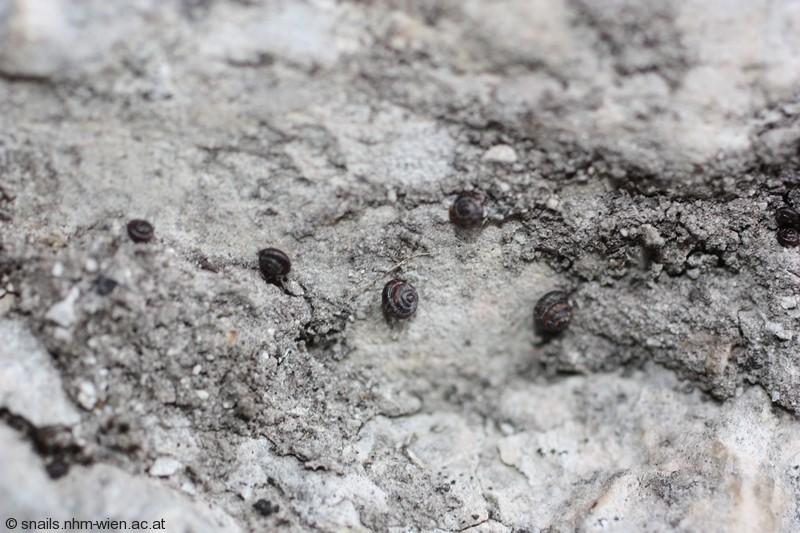
Pyramidula pusilla
Communication: Sandra Kirchner
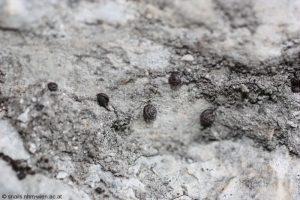
The small-sized pulmonate land snail Pyramidula pusilla (VALLOT, 1801) is a member of the monotypic family of Pyramidulidae.
The small-sized pulmonate land snail Pyramidula pusilla (VALLOT, 1801) is a member of the monotypic family of Pyramidulidae. It is a very common species in the Mediterranean area and in western and central Europe. The preferred habitats of this species are sun-exposed limestone rocks from lowlands up to high altitudes (above 2200m asl in Austria). In 1996 Gittenberger and Bank carried out a taxonomic revision of the family Pyramidulidae and separated P. pusilla from P. rupestris. The fact that most of the Pyramidula species look very similar, especially P. pusilla and P. rupestris challenged us to take a closer look on the genetic variation and phylogeography of P. pusilla. So far, 239 individuals collected at 87 different sampling sites have been analysed. After DNA extraction, the cytochrome c oxidase subunit 1 gene of the mitochondrial genome was amplified via PCR and sequenced. A neighbour-joining tree calculated from the sequence data revealed the existence of at least two genetically distinct groups within the species P. pusilla. However, the pattern of genetic differentiation does not correspond with the geographic distribution of the sampling sites (coordinates). Thus, we started with a morphological analysis which includes currently 100 individuals. These analyses require the individuals to be photographed from three different directions (top, side, bottom). The photographs will be evaluated morphometrically. This work is still in progress and will hopefully give further information about the phylogeography and genetic differentiation of P. pusilla.
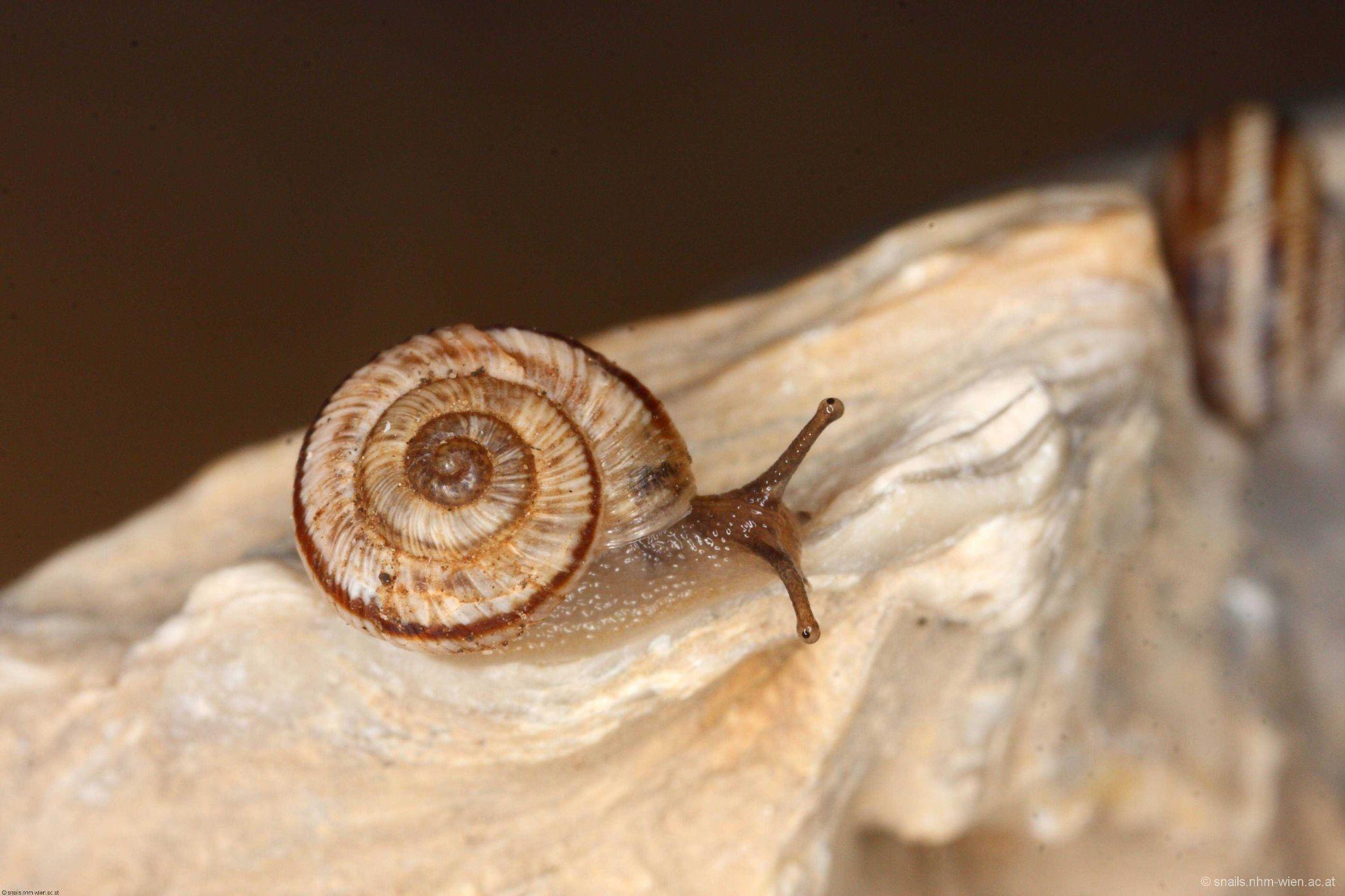
Small heath snails
Communication: Anita Eschner, Katharina Mason
The older malacological literature differentiates three species of the genus Helicopsis in Austria: the Striped heath snail Helicopsis striata (O. F. Müller 1774), the “Hungarian” heath snail Helicopsis hungarica (Soos & Wagner 1935) and the Austrian heath snail Helicopsis austriaca Gittenberger 1969, whereby the latter two were subsequently downgraded to subspecies of Helicopsis striata. All three forms are characteristic inhabitants of relict sites with open, sparse vegetation – a highly endangered habitat in Austria. The subspecies austriaca is listed in Appendix II of the Habitats Directive, and the validity of the subspecies hungarica is questioned by some authors. For these reasons, and because it remains unclear whether the populations in Seewinkel belong to the latter or represent an independent taxon, a project was initiated to re-map and phylogenetically investigate the Austrian populations of Helicopsis striata.
Already the first results of a molecular genetic analysis (short segment of the mitochondrial COI gene) had shown that the three subspecies can be clearly differentiated. Moreover, during the course of the project, all three subspecies of heath snails were found alive also on sites where they had been considered as extinct. This may partially reflect improved dry grassland management in recent years. In a next step, comprehensive genetic, shell- and genital-morphological investigations were conducted leading to a revaluation of the three subspecies to species level. The results confirmed H. austriaca a nature treasure of Eastern Austria, where it inhabits natural rock and gravel steppe. One population of the Seewinkel was confirmed to be H. hungarica. The project was funded by the provincial governments of Lower Austria and Burgenland.
Collaborators: Duda, M., Haring, E., Bieringer, G., Mrkvicka, A.
Figures: (1) Striped heath snail Helicopsis striata, (2) “Hungarian” heath snail Helicopsis hungarica, and (3) Austrian heath snail Helicopsis austriaca (Fotos: A. Mrkvicka).